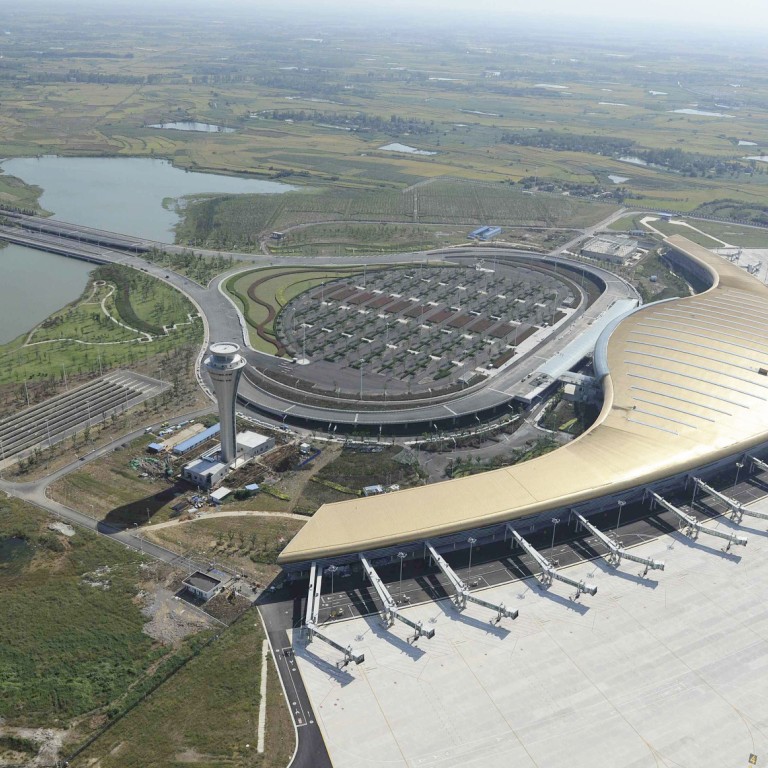
Airport building spree takes off as 50 Chinese cities reveal hubs plan
More than 50 cities embrace Beijing's vision for aviation hubs serving industrial zones, but critics see more debt-fuelled construction
More than 50 mainland cities have answered Beijing's call for cleaner economic growth with plans for aviation hubs - airports clustered with industrial zones.

But critics argue the projects will exacerbate the problem of debt-fuelled construction, which local authorities have used for years to boost their economies.
Such "plans often start high key, but end poorly", government researcher Wang Jun said.
"It is not necessarily a good thing for the whole nation, as so much investment will often lead to overcapacity and increase local government debts," said Wang, who works at the China Centre for International Economic Exchanges. "There are already signs of redundant investment, as some regions in China have too many airports, which are not in full operation."
Wang Xiaohua, an aviation consultant at Kent Ridge Consulting in Fujian, said developing an aviation hub involved more than simply building an airport.
It first of all required minimum annual passenger flows of 10 million and cargo volume of 200,000 tonnes, she said. Only Beijing, Shanghai, Guangzhou, Chengdu, Shenzhen and Kunming met that criteria last year.
The mainland will need more airports as the economy grows, but profits are elusive. Of the mainland's 183 airports, 143 lose money, data from the Civil Aviation Administration of China shows. That suggests that more than 60 of the 80 new airports envisioned in the latest five-year plan to 2015 will end up in the red.
A third of all passengers and half of all cargo go through just three aviation hubs - Beijing, Shanghai and Guangzhou - CAAC figures show.
Such a tough business landscape has not put off Henan's provincial capital Zhengzhou, 650 kilometres south of Beijing, which aims to expand trade at its existing airport tenfold to US$200 billion by 2025 by adding three more runways. "We will work to reduce logistics cost from Zhengzhou to eastern, western and central part of China, and also build highways to connect the airport to the rest of China," Henan governor Xie Fuzhan said.
But Yong Hu, the chief China representative of Global Express Association, whose members include delivery companies DHL, FedEx, TNT Express and United Parcel Service, is not convinced the idea will work.
UPS already services Foxconn, Apple's main supplier on the mainland and the only major company near the airport. "Apart from Foxconn, what other big firms are there?" Yong said.
Despite Yong's scepticism about the project's viability, Zhengzhou's plan has been endorsed by the central government. Local authorities do not need the stamp of approval from Beijing, but such endorsement gives a city the opportunity to receive financial aid.
Otherwise, they may resort to debt-financing to fund a project. Nearly all the cities planning aviation hubs were eyeing Fortune 500 companies for investment, consultant Wang Xiaohua said.
"Many cities resort to offering free tax and cheap land," she said, which in turn reduced their ability to service debts.
Still, airport fever has struck, with Dalian building a 20.9 square kilometre island for a new airport, the largest of its kind in the world. Hilly Shennongjia, in central Hubei province, has flattened the tops of five mountains to build its airport.
CAAC head Li Jiaxiang told an industry forum in May that building an airport was a reflection of the economic times. "In the 1980s, people would say 'if you want to get rich, build a road'. Nowadays they say 'if you want to develop, build an airport'."

